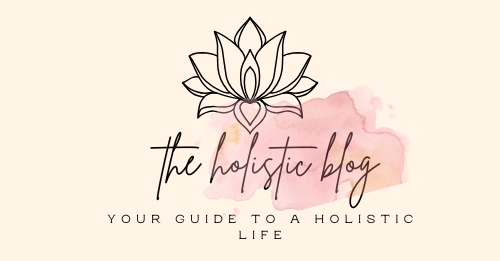The Holistic Guide to Wellness : 5 Powerful Steps
Table of Contents
in today’s hectic world, achieving balance may seem like an unattainable goal.. Between work pressures, social commitments, and endless to-do lists, it’s easy to neglect our health and well-being. But what if achieving a sense of balance doesn’t require drastic lifestyle changes? What if wellness could be a more natural, integrated part of your daily life?
The holistic guide to wellness is all about addressing every aspect of your health—mind, body, and soul—in a balanced and mindful way. Rather than focusing on one isolated area, this approach looks at the interconnectedness of all these aspects and how they influence each other.
In this guide, you’ll learn how to implement small but impactful changes in your life that align with a holistic approach to wellness, helping you feel healthier, happier, and more fulfilled.
What Is Holistic Wellness?
Before diving into the practical aspects of holistic wellness, it’s important to understand what it truly means. Holistic wellness is more than just eating well or working out; it’s an approach to living that takes into account the whole person. This includes your physical health, mental well-being, emotional balance, and spiritual alignment.
The Core Concept: Balance
In a world full of distractions, achieving balance can seem challenging, but it’s essential for your overall health. The holistic guide to wellness encourages you to prioritize all areas of life, recognizing that they’re all deeply connected. For example, poor mental health can manifest in physical ailments, and neglecting your spiritual health can lead to emotional imbalance.
In essence, holistic wellness is about nurturing every part of your being, with the understanding that when one area is out of sync, the others will inevitably be affected.

The Pillars of Holistic Wellness
Holistic wellness is built on several key pillars that work together to support your well-being. These pillars form the foundation of your daily routines and practices, ensuring a balanced and fulfilling life.
1. Physical Wellness: The Foundation of Your Well-Being
Your physical health is the most tangible aspect of wellness, and it’s also the easiest to measure. However, it’s important to remember that your body is a reflection of your lifestyle choices, which is why caring for it is essential for achieving balance.
Key Aspects of Physical Wellness:
- Nutrition: Eating whole, nutrient-dense foods that fuel your body is one of the most effective ways to improve your physical health. Try to incorporate a diverse range of fruits, vegetables, whole grains, and lean proteins into your meals
- Exercise: Regular movement is essential for maintaining a healthy body. It doesn’t have to mean hours at the gym—simple activities like walking, yoga, or stretching can keep your body strong and agile.
- Sleep: Quality sleep is just as important as physical activity and nutrition. Without proper rest, your body doesn’t have the time to recover and regenerate, which affects your energy levels, mood, and focus.
2. Mental Wellness: Caring for Your Mind
Mental wellness focuses on maintaining clarity, reducing stress, and cultivating a positive mindset. In a world filled with distractions, taking care of your mind is more important than ever. Mental wellness is not just about avoiding mental health challenges—it’s about building resilience, focus, and emotional intelligence.
Key Aspects of Mental Wellness:
- Mindfulness: Practicing mindfulness through meditation, deep breathing, or journaling can reduce anxiety and help you stay focused. Mindfulness allows you to be present, reducing the mental clutter that often leads to stress.
- Stress Management: Stress is unavoidable, but how you handle it can make all the difference.. Find effective ways to relax, whether through yoga, deep breathing, or taking breaks throughout your day.
- Mental Stimulation: Your brain needs regular exercise just like your body. Reading, puzzles, and creative activities help stimulate cognitive function and keep your mind sharp.
3. Emotional Wellness: Understanding and Managing Your Emotions
Emotional wellness is all about developing the ability to understand and regulate your emotions. It involves nurturing emotional intelligence (EQ), which impacts how you interact with others, respond to challenges, and even perceive yourself.
Key Aspects of Emotional Wellness:
- Self-Awareness: Understanding your emotions and triggers is the first step in emotional wellness. When you can identify your feelings, you can respond to them constructively rather than react impulsively.
- Healthy Relationships: Strong relationships with family, friends, and colleagues are crucial for emotional health. Healthy relationships are built on trust, communication, and mutual respect.
- Self-Love and Compassion: Taking care of your emotional needs and practicing self-compassion allows you to feel more balanced and resilient. Learn to give yourself grace during challenging times and acknowledge your worth.
4. Spiritual Wellness: Connecting to Your Inner Self
Spiritual wellness is about finding a sense of meaning and purpose in your life. It’s not necessarily tied to religion, although for some people, that may be part of the equation. Rather, spiritual wellness is about feeling aligned with your values and the world around you.
Key Aspects of Spiritual Wellness:
- Purpose and Meaning: Everyone has their own sense of what gives life meaning. Whether it’s your family, career, or a personal passion, discovering what brings you fulfillment can help guide your decisions.
- Meditation and Reflection: Spending time in quiet reflection or meditation helps connect you to your inner self and gives you clarity on your life’s path.
- Connection with Nature: Many people find a sense of peace and purpose when they spend time in nature, whether it’s through hiking, gardening, or simply sitting in a park.

Practical Tips for Embracing Holistic Wellness
Adopting a holistic approach to wellness doesn’t require major life overhauls. Small, consistent changes can make a huge difference in your well-being. Here are a few tips for incorporating holistic wellness into your daily routine:
1. Start Your Day with Intention
our morning routine shapes the mood for the rest of the day. Consider starting with activities that nurture your body and mind:
- Drink a glass of water to hydrate.
- Engage in 5–10 minutes of meditation or deep breathing.
- Eat a nourishing breakfast that includes protein, healthy fats, and fiber.
2. Move Your Body Regularly
Exercise doesn’t have to be so difficult and intense to be effective. Aim to incorporate movement into your day, whether through yoga, walking, or stretching. Find activities that you enjoy, so they become a sustainable part of your routine.
3. Practice Gratitude
Take a few minutes each day to reflect on the things you’re grateful for. Writing them down in a gratitude journal can help shift your mindset to one of positivity and abundance.
4. Manage Your Stress
Make time for activities that reduce stress, such as reading, taking a hot bath, or spending time with loved ones. These moments of relaxation help restore your emotional and mental balance.
5. Prioritize Sleep
Aim for 7–9 hours of quality sleep each night .Maintaining a regular sleep schedule and fostering a calm environment can enhance the quality of your sleep.
The Benefits of Holistic Wellness
By embracing a holistic approach to wellness, you’ll experience numerous benefits, including:
- Increased Energy: With a balanced lifestyle, you’ll feel more energetic and less fatigued.
- Improved Mental Health: Stress reduction and mindfulness practices improve focus, clarity, and emotional regulation.
- Stronger Resilience: Holistic wellness helps you better cope with life’s challenges and bounce back from setbacks.
- Enhanced Fulfillment: When all areas of your life are in harmony, you’ll experience greater joy and satisfaction.
Frequently Asked Questions (FAQs)
Q1: What does the holistic guide to wellness involve?
The holistic guide to wellness focuses on nurturing all aspects of your life—physical, mental, emotional, and spiritual—to achieve overall well-being. It’s about finding balance and living with intention.
Q2: How can I start embracing holistic wellness?
Begin by focusing on small, manageable changes, such as eating more whole foods, incorporating mindfulness practices, and moving your body regularly. Gradually add other practices like stress management and emotional awareness.
Q3: Can holistic wellness improve my mental health?
Yes! Holistic wellness includes practices like mindfulness, meditation, and emotional self-awareness, which have been shown to reduce stress, improve focus, and promote mental well-being.
Conclusion
The holistic guide to wellness is about finding balance and connection in every aspect of your life. By integrating physical, mental, emotional, and spiritual practices, you can create a lifestyle that supports your overall well-being. Start with small steps, and remember that each positive choice you make will bring you closer to a healthier, more fulfilling life.
Are you ready to take the first step on your wellness journey? Embrace the holistic approach and discover the transformative power of balance in your life today!







